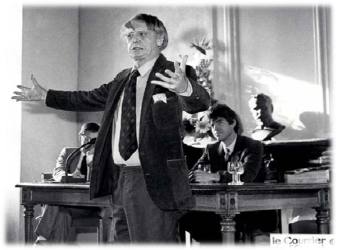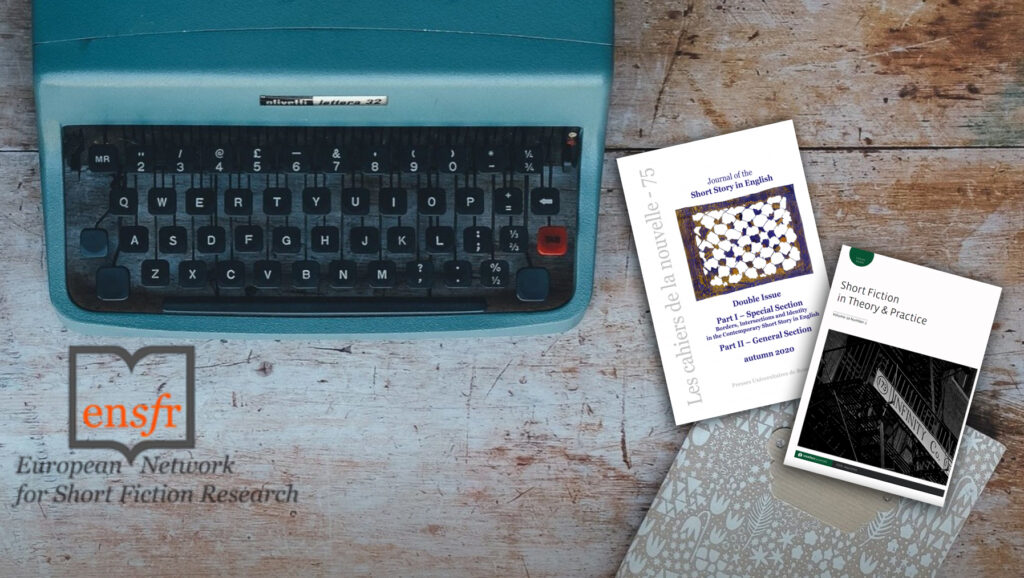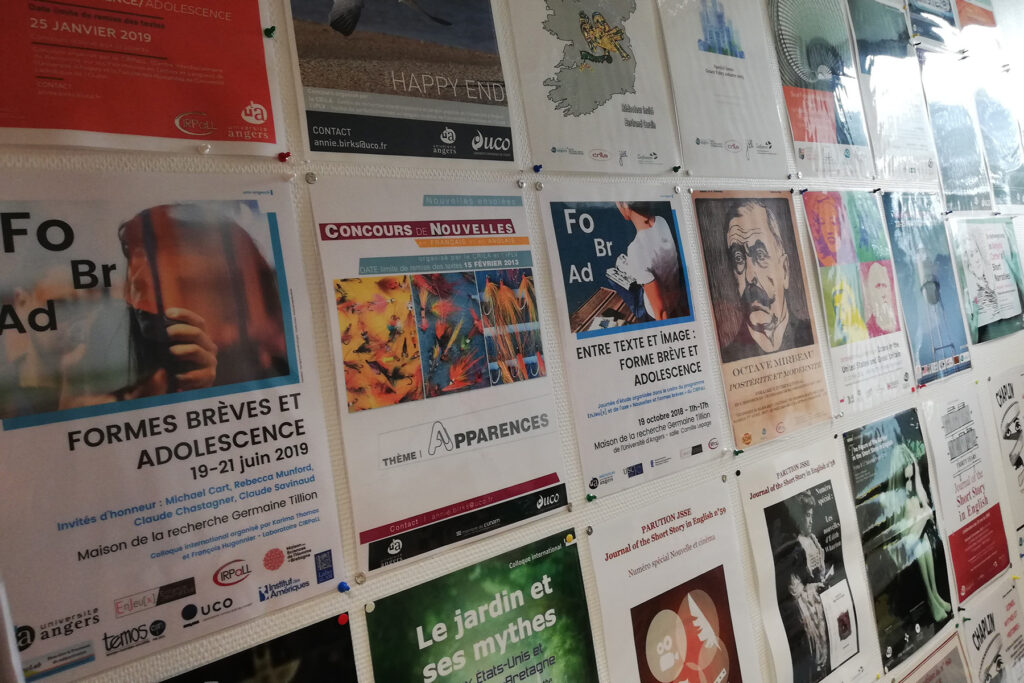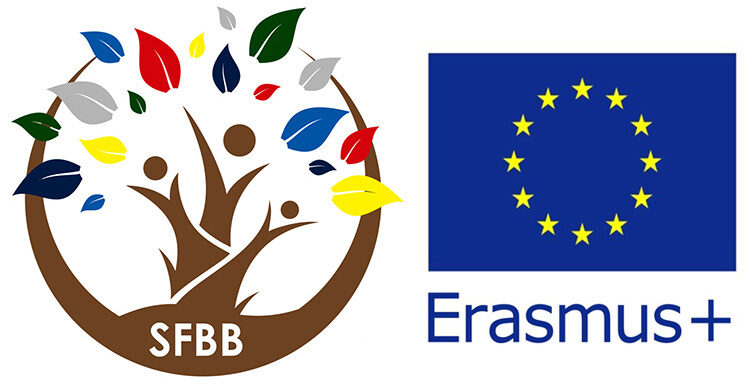In Angers, interest in brevity has a long history.

In the 1980s, it came to the fore through sustained research into the short story in English. In 1983, under the aegis of Anthony Burgess, the Journal of the Short Story in English (JSSE) was launched. [One can read about the journal’s conception and initial years in a short presentation by Ben Forkner in the 2000 May issue of JSSE.]
Numerous conferences were held between then and 2000 in the beautiful hall of the Bibliothèque Toussaint with renowned short story writers as guests of honour, from all corners of the world where short stories are written in the English language. Thanks to JSSE, the short story symposia and the work of Angers’ scholars, Angers has become, in the eyes of French Anglicists, the shrine of the short story, as evidenced by the quotes from short story writers that surround the Maison de la Recherche building.
30 years later, interest in the short story spread more generally to short fiction, and international synergies developed between the Journal of the Short Story in English and Short Fiction in Theory and Practice, published under the auspices of Edge Hill University. These synergies led to the formation of the international European Network for Short Fiction Research (ENSFR), officially created in March 2014 with Edge Hill University (UK) and the University of Leuven (Belgium).

In 2016, two research groups in Angers merged, bringing together the English and French teaching and research staff, and opening up our research on short fiction to other languages and to forms other than literary ones.
A series of workshops, seminars, study days and two conferences on short forms in literature, the arts and communication obtained regional funding between 2016 and 2019, to explore, on a national and international level, brevity as form in a number of areas (teenagers’ interest in short forms, the concept of brevity in travel and tourism, in communication, short forms used to welcome migrant pupils through games, creative activities, etc. ). Several types of short forms (short story, tale, graphic novel, multimedia, etc.) were discussed.

These conferences and study days led to fruitful exchanges between the academics from the partner universities. Their shared confidence in the crucial importance of brevity as form in current debates, its centrality within our fast-moving societies, and its effectiveness in certain contexts such as education and mediation brought them together for the project. Three publications resulting from these events provided an opportunity to advance hypotheses on common features shared by many short forms, and to anchor these hypotheses in tangible facts. Each of the colleagues involved had expressed an interest in brevity as form and/or in its effectiveness either in research or in pedagogy within their institution. And we all agreed to work around these topics which, even if they had already been the subject of a series of studies and publications, had not quite passed the threshold of a hypothesis.
